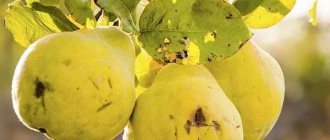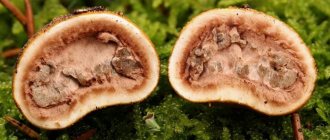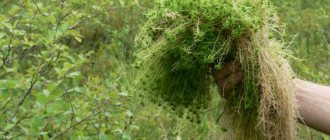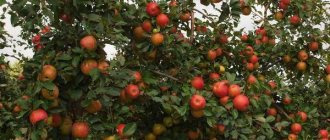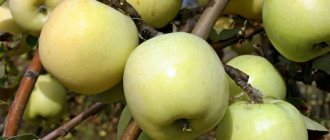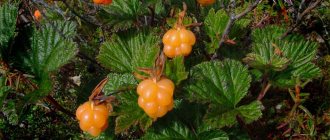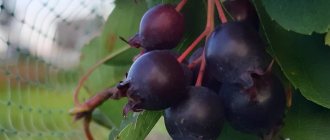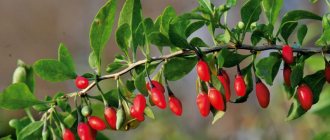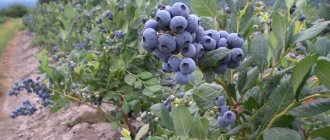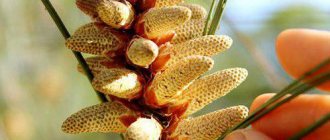Plum Yellow
People are usually accustomed to seeing purple and blue plums on tables and store counters. But there are varieties that have completely different colors. Yellow plum is one of these. It was obtained by crossing cherry plum and wild plum. This hybrid, due to its sweetish taste, is suitable both for preparing various sweets and for fresh consumption. Let's look at some varieties of yellow plum.
Honey
- It is not for nothing that it has such a name. It is associated with its extraordinary honey taste, which experts rate at 4.5 points out of a possible 5.
- It can be grown even in cold regions of our country. The fruits are round in shape and reach 50 g. Under optimal growth conditions, one tree 5 m high produces up to 30 kg of berries with yellow, juicy pulp and easily separated seeds.
- The plant has an early ripening period; the first harvest can be enjoyed in early August. She is self-sterile. It is recommended to plant Hungarian, Renklod Karbysheva next to it as a pollinator.
- Trees can easily tolerate short-term drought and frost. They can be grown in any climatic conditions. Unfavorable weather does not affect the quality of the harvest. Fruits can be transported without damaging them.
- “Honey” is not distinguished by the complexity of agricultural technology. The fruits are suitable for canning and any other types of processing. Among the disadvantages, gardeners note the impressive size of the plant, which requires a large area.
Morning
- Obtained through the labor of Russian scientists by crossing Renclad Ullens and Skorospelka red. Tree of medium height.
- The berries are yellowish-green in color, with a small pink area on the sunny side. The taste is pleasant, weighing about 26 g. The fruits are very aromatic. But the first harvest can be harvested only 3-4 years after planting the tree. A huge advantage of the variety is that it is self-fertile.
- The first fruits are harvested in early, mid-August. One small tree produces up to 15 kg of fruit, which has an excellent presentation.
- Plants require little care for themselves. Disadvantages include instability to spring frosts and average resistance to pests and diseases. In winter, to protect it from severe frosts, it must be additionally covered.
Firefly
- This is another variety of plum, with a yellow skin. "Firefly" is a variety of Domashennaya plum.
- Trees with an average period of fruit ripening reach a height of up to 5 m. The fruits are spherical in shape, weigh 30-40 g. The peel and pulp are yellow. The seed is easily separated from the inside of the berries. The fruit tastes sweet, with a slight sourness. Suitable for both preparation and fresh consumption.
- Fruiting begins 2 years after planting.
- Considered frost-resistant. Tolerates drought well. The plant bears fruit every year. But only if there are suitable pollinators. The names of the varieties capable of pollinating it have not yet been precisely identified.
Some sources classify the firefly as a pollinator:
- Collective farm farmhouse
- Lighthouse
- Record
- Yield yield
fruit tree
If we look in a botanical reference book and look for a description of a fruit there, we will see that a fruit is a juicy fruit of a tree or shrub that is eaten.
Thus, it turns out that fruit is a very broad concept, which includes, among other things, berries. In some languages, there is not even a word that would be equivalent in meaning to the Russian “fruit”; instead, there is the concept “fruit”
- Operation of a piston compressor
- Garden equipment from - features and benefits
Plant nutrition
If we consider the plum, it becomes clear that it cannot be considered a berry from a botanical point of view. Firstly, it grows on trees, not bushes. Even those low-growing bush-like varieties are actually small trees, not shrubs.
Secondly, the plum fruit itself is not described as a berry - it has one seed, not several, and it is too large to even look like a berry.
So plum is a fruit, like all its relatives, other fruit trees are apricot, peach, almond, sweet cherry and cherry.
Plum Renclod
Under this name, different varieties of the same species are united - domestic plum. Western Europe is considered to be the homeland of Renclod plums. These are trees with a height of 5 to 7 m. The berries are egg-shaped. Their color, depending on the variety, can range from yellow-green to purple. The peel is matte.
This group received particular value for its taste. The fruit inside is soft, juicy and sweet. Productivity directly depends on weather conditions. They can bear fruit even once every few years.
The most famous varieties from the Renclod group:
- Green
- Enikeeva
- Soviet
- Blue
- Prizedentsky
- Michurinsky
- Karbysheva
- Kuibyshevsky
- Leah
- Tatar
- Ulena
Let's look at some of them in more detail.
Soviet
- Low trees, no higher than 3 m. Refers to cold-resistant, high-yielding varieties. Can tolerate frosts of 25-30°C. Trees are not affected by most of the diseases characteristic of this crop.
- Fruiting begins in the 4th-5th year of plant growth, in the central part of the country at the end of summer. One tree annually produces 10-15 kg of fruits with dark purple skin, weighing 40 g.
- Inside the juicy, yellow pulp there is a seed, which is easily separated from the main part of the fruit.
- The taste of Soviet plum is not very sweet, but without a sour aftertaste. It is mainly eaten fresh, as it is not suitable for heat treatment.
Kharitonovskaya
- It is not resistant to strong drops in air temperature, so it cannot be planted in cold regions of the country. Low-growing plants bear fruit every year, 4-5 years after planting.
- Large juicy fruits of round shape, weighing on average 45 g, can be used for any purpose. Their skin is purple. The inner part is red and yellow. There is a seed embedded in it, which comes off well from the pulp.
- From one plant, 18-22 kg of crop is harvested, which can be easily transported. Fruits can be used immediately after picking, or they can be used to make jams, compotes, etc.
- It is considered a drought-resistant variety. Resistance to clasterosporium blight was noted.
White
- The name is associated with the color of the fruit. It was obtained by Ukrainian breeders by crossing the Persikovaya and Jefferson varieties.
- On a tree about 4 m high, berries are formed weighing 35-40 g in the 3rd year of planting. They taste pleasant, sweet, aromatic. The pulp is white, juicy.
- The seed is easily separated from the main part of the fruit. Fruiting occurs at the end of July, beginning of August. The harvested crop can be easily transported.
- White Reclod can be consumed fresh or used for preparations. But after canning and heat treatment, products obtained from this variety do not have a very good presentation.
- The trees tolerate cold well - down to -30 °C, and drought. The variety is self-sterile.
The following should be planted as pollinators:
- Renklod Green
- Donetsk early
- Renclod Altana
- Hungarian Donetsk
Late plum varieties
Most often used for preservation and storage for the winter in the form of dried fruits, they have good frost resistance. Gardeners in the middle zone and northern regions should be selective when choosing late-ripening varieties, since they may lose most of the harvest due to early September frosts.
- The president.
The ripening period is mid-September, the tree of this variety is exceptionally productive; with good care you can get from 40 to 70 kg of large blue fruits with juicy yellow pulp. The purpose of the fruit is universal, suitable for producing prunes, long-term storage and transportation.
- Empress
The tree of this variety is tall, up to 4 m in height, ripening period is 2-3 ten days of September. The plum of this variety begins to bear fruit at 4-5 years of age. It produces about 20 kg of dark purple large fruits with yellow and juicy pulp (up to 50 g). Purpose – processing and procurement.
| The president Empress |
Plum Hungarian
Hungarian plums are a group of varieties that can grow in different climatic conditions. Their agricultural technology is not complicated, so this group is suitable for growing by novice gardeners.
Trees up to 6 m high. Their fruits are ellipsoidal in shape, different shades of blue and purple. The inside of the berries is dense and yellow. They bear fruit every year. Most Hungarian fruits do not require pollinator varieties to be planted with them.
The berries of this group of plants are used to make prunes. Hungarians bear fruit well, are resistant to drought, suitable for storage and transportation, but the first harvest can be harvested no earlier than 6 years after planting.
Stanley
- The Domestic Plum variety belongs to the “Hungarian” variety. These trees are native to the USA. In Russia, it is recommended to plant it in the southern regions and the North Caucasus.
- The plants are of medium height and produce purple berries weighing about 45 g.
- Inside they are dense, medium juicy. The pulp is yellow-green, granular. The fruits taste delicious, with a slight sourness.
To obtain prunes, this variety is most often used.
Hungarian
Now let's look at the description of the Vengerka plum varieties. This is a pomological group of domestic plums. The fruits are elongated, ovoid in shape. The skin is dark, with a waxy bluish coating on it. The pulp is dense and the pit is easy to remove.
Prunes are made from Hungarian plums, as they contain a lot of pectin and sugars. If you dry the fruit of some other varieties, you will get an inedible dry plum.
The name of plum is popular, due to the place of its primary growth - Hungary. They didn’t pick the fruits from the trees there, they waited for them to fall on their own. In this case, they were already slightly dried out.
Plum Columnar
This type of plum appeared in our country several decades ago. But it was “to the taste” of many gardeners. Its main difference can be considered an extremely narrow crown - 80 cm. Columnar plum varieties are convenient to plant in small areas, since they do not have spreading branches. But such plants have a significant drawback - they cannot tolerate low temperatures.
The columnar plum does not have a large number of varieties.
The most famous:
- Imperial (pink fruit)
- Mirabelle (yellow berries)
- Blue Sweet (purple fruit)
These are small trees, about 2 m high, producing up to 16 kg of fruit. They can be used both fresh and for jam, jam, etc. Fruiting begins at the 3rd year of life. Productivity is growing every year.
Imperial
- Bred by Russian breeders. It has not yet become widespread in our country. Low-growing trees do not grow higher than 2.5 m. They do not tolerate drought, but are frost-resistant.
- The low height of the plants makes them easier to care for. They require virtually no pruning and the harvesting process does not require the use of a ladder.
- In areas with cold winters, young seedlings require additional shelter.
- Its fruits are round in shape, weigh 45-60 g. They are formed a year after planting in a permanent place. The thick peel is colored in different shades of pink and purple. But there are also specimens of a darker color. Inside they are yellow, juicy, and pleasant to the taste.
- Fruiting occurs in mid-August. One plant produces 10-12 kg of berries. They do not immediately fall off the tree, so you can collect them gradually.
- "Imperial" can be transported and stored in an unprocessed state for up to 1.5 weeks. The quality of the fruits makes it possible to prepare compotes, preserves, and jams from them.
Application
Plum can be used not only as a food product, but also in other areas of life. Scroll below to find out more!
In cooking
Plum is a wonderful product that can be eaten both raw and baked. Baked plums with honey and nuts will appeal to lovers of baked apples - an interesting variation of dessert for those on a diet. You can bake duck with plums - a real gourmet delicacy. In addition, plums can be added to vegetable salads. Plums can be rolled up in jars, made into jam, jam, or smoked.
In medicine
You won’t find plums in official medicine, but in homeopathy and folk medicine plums are famous as a good laxative and diuretic. Plum fruits can be found in many dietary supplements.
Plum improves digestion, stimulates appetite and disinfects the intestines. Plum can remove radionuclides from the body, treat anemia, hypertension, rheumatism, chronic constipation and diseases of the excretory system.
When losing weight
Mono diets based on plums can be called quite popular. Plum removes toxins and acts as a good laxative and diuretic. Thanks to these properties, excess water leaves the body. In addition, plum can speed up metabolism, so it is often used as a means of losing weight.
In cosmetology
Plum pulp is used in cosmetology due to the active substances contained in the composition. These substances have a lifting effect and actively tighten pores. Many masks for oily and combination skin use a combination of plum pulp and juice with other fruits, yoghurts and various products. Such masks whiten the face, smooth out fine wrinkles and tighten pores. At the same time, plum masks are useful for acne and facial eczema.
Chinese plum
China is considered the birthplace of this plum. Its varieties are most often distributed in our country in the Far East and Siberia.
The main features of Chinese plums are their early fruiting and rapid growth. The first harvest from the trees is harvested 1-2 years after planting. With age, the number of fruits on the plant becomes larger.
In large-fruited varieties, the berries reach 120 g. Depending on the variety, their peel can be yellow, red, purple, or orange. They store well and are suitable for long-distance transportation.
The pulp is sweet, with a strong aroma and a fused stone that is not easy to separate. But in terms of taste, they are much inferior to homemade plums. Let's look at some varieties in more detail.
Alyonushka
- This is a variety of Chinese plum, which was bred specifically for cultivation in the middle part of our country. Obtained by selection of two varieties of Chinese plum.
- This variety has not yet become widespread in Russia. Due to its cold resistance, it is suitable for cultivation in Ukraine and Belarus. It is considered resistant to moniliosis and clasterosporiosis. But it is susceptible to aphids.
- Alyonushka is a small tree, with an average height of 2.2 m. The fruits are large, weighing up to 50 g. They are spherical in shape. They taste like peach.
- The skin is colored in different shades of red and pink. The berries inside are juicy, sweet, sour, and orange in color. Fruits with medium-sized seeds that are difficult to separate from the pulp.
- Alyonushka plums ripen early. They can be transported over long distances. But they are not suitable for storage. It is best to use them in their raw form.
- It is necessary to plant other pollinating varieties next to this tree, since it is self-sterile. The best “neighbors” for Alyonushka are early ripening varieties of Chinese plums and cherry plums.
Precocious
- Suitable for growing in the coldest areas of the Moscow region. Can withstand air temperatures down to -40 C.
- A small tree, no higher than 2.5 m. The color of the fruit can range from yellow to red. One berry weighs about 30 g. Inside it is juicy, with moderately dense orange pulp and an inseparable seed. The taste is sweet, with sourness. The smell is reminiscent of melon.
- Fruiting begins a year after planting at the end of July, beginning of August. From one tree you can harvest up to 30 kg of harvest. But to get berries, you need to plant other varieties - pollinators - next to it. “Skoroplodnaya” is demanding on the pollination process. For its proximity, it is better to choose cherry plum hybrids, the Red Ball variety.
- The plant is resistant to clasterosporiosis.
For long-term storage, early fruiting plums are harvested unripe.
Souvenir of the East
- The variety was obtained by hybridizing the Giant and Veniaminova Zarya plums. The fruits have a good presentation. The taste is similar to a peach. Mainly used for fresh consumption.
- The berries are dark red, weigh about 40 g. When cut, you can see the orange, juicy pulp, which contains a small seed.
- On a tree 2.5 m high, the first fruits begin to ripen in mid-August. But for this it is recommended to plant a Giant plum next to it. Subject to the presence of a pollinator, 1 plant can produce up to 45 kg of yield.
- There have been cases of plants being affected by clasterosporium blight. Winter hardiness is average.
The best plum varieties for Central Russia and the Moscow region
Yellow plum: what are the varieties called, description and care
In the central zone, plums are grown in large quantities. Therefore, summer residents try to choose the most successful varieties.
Early fruiting (Chinese plum)
The variety belongs to the Chinese variety and grows in the middle zone. A small tree with a round crown. It begins to bear fruit in the third year, but not always regularly. The variety tolerates high frosts very well, even frosts in the spring.
Fruiting requires pollinators, which are planted nearby. The harvest can be harvested in early August. The fruits are yellow, small in size - up to 28 grams. The fruits are juicy and have a wonderful sweet and sour taste with a hint of melon. The variety is resistant to various diseases.
Renklod Soviet (blue)
Renklod Sovetsky is one of the most famous and popular varieties. The tree grows up to 3 meters. The fruits are dark purple in color and covered with a light waxy coating. The weight of the plum reaches 40 grams. The pulp of a large blue plum is very juicy, tastes sweet with a slight sourness. The variety has excellent frost resistance and regular high yields.
Blue gift perfectly resists various diseases
Blue gift
The tree grows up to 3 meters. The fruits are oval, small in size, weighing up to 20 grams. The skin is smooth, blue-violet in color. The pulp is yellow-green, juicy, sweet with a slight sourness.
The variety is characterized by high immunity to diseases and is moderately resistant to frost and drought.
Egg blue
Self-fertile variety grown in the middle zone. The fruits have a dark blue hue with a whitish coating. The pulp is sweet, juicy, and the shape of the fruit resembles an egg.
The tree can grow up to six meters. The variety tolerates frost well without damage to the buds. It does not tolerate drought and requires abundant watering. The harvest can be harvested in mid-August. The variety can be affected by harmful insects and hole spot.
Stanley or Stanley
The variety grows well in the southern regions of the country. The trees have an average size - up to three meters. Fruiting occurs in the sixth year, and the crop does not require a period of rest.
The fruits are large, dark purple in color, the flesh is yellow and aromatic. The variety tolerates frost well and is resistant to some diseases, except gray rot. Plum aphids and the dry season also pose a threat to the crop.
Note! The Stanley variety is distinguished by its demands on soil and fertilizing.
Alyonushka with peach leaves
A Chinese variety that is notable for its large and spherical crown. The leaves of the variety are very similar to peach, which is why the culture received this name. The fruits are large, sweet and sour and aromatic, medium in size, with red skin.
The tree is small in size, grows up to 3 meters. The variety is frost-resistant and is rarely affected by diseases.
Cherry plum or Russian plum
Cherry plum has large spherical fruits. The weight of a round plum reaches 40 grams.
There are several different types of cherry plum
Taste qualities vary - from sweet to slightly sour. The variety has a very pleasant aroma. The crop tolerates even severe frosts very well and rarely suffers from pests and diseases. This is considered to be an excellent option for beginners.
Black plum
The culture tolerates frost well. With proper care, the first plums can be obtained three years after planting. In this case, the color of the fruit can even be yellow or red. The variety is decorative and is often used for site design.
General's
The small plum was bred specifically for the northern regions, so it tolerates even very severe frosts. This is a low-growing bush with large fruits that can reach 40 grams. The bush plum harvest is harvested three years after planting. For fruiting, a pollinator is required - Ural red.
The color of the fruit varies from bright yellow to orange with a red blush, and the taste is sweet and sour. Ripening occurs in early September, the fruits have a very long shelf life.
Kuban legend
The tree is medium-sized with oval fruits. Plums are purple-red in color and weigh up to 32 grams. The pulp is yellow-green, juicy and sweetish, with a wonderful aroma. Fruiting is regular.
Note! The variety tolerates frost and drought well; with quality care, the yield increases.
Renklod Kolkhozny
A medium-sized tree that requires pollinators. Plums up to 30 grams, sweet with sourness, round in shape. The pulp is tender, the skin has a slight bitterness. The variety is productive and resistant to all crop problems.
Renklod Kharitonova is a very productive variety
Renklod Kharitonova
The variety is productive, but not very resistant to frost. The tree is vigorous. The fruits are universal, large, have a good taste, weighing up to 40 grams. The main color is dark purple. The pulp is light green in color, dense, the taste is sourish-sweet. Well stored and easily transported.
Renklod Green
The tree is large, grows very quickly, can reach 6 meters. The fruits are not attractive in appearance, but have a pleasant taste - ripe plums are very sweet. Fruit weight is up to 40 grams, sometimes less. The skin is greenish in color.
The variety is unpretentious, resistant to fungi, loves light areas.
Yellow mirabelle
The fruits of this species are sweet and juicy, a little like cherry plum. They are small in size and have yellow skin.
A group of Ussuri plums tolerate cold weather well
The tree is medium-sized, grows up to 3 meters. The advantages include stable fruiting, resistance to frost, fungal diseases and drought.
Red-meat plum
One of the late varieties of Chinese plum, which combines many varieties. Fruiting begins in mid-August. These are trees of medium height, no higher than 2.5 m, with a ball-shaped crown.
Plums are colored dark crimson, weigh about 25 g. They taste sweet and sour, with a strong aroma. Inside the raspberry pulp there is a small seed that can be easily separated from the main part.
All varieties are self-sterile. It is recommended to plant other varieties next to “Krasnomyasa” as a pollinator:
- Precocious
- Russian plum
The most famous:
- Red meat big
- Red meat persistent
- Red meat mountain
- Red meat mid-mountain
- Red-fleshed submountain
- Red-fleshed drooping
- Red meat heart-shaped
- Red meat lilac
Let's look at some of them.
Red meat big
- A frost-resistant variety with dark red juicy, aromatic fruits, weighing 20-25 g. Under the bitter skin of the berries there is red pulp with a semi-detached seed.
- This is a tall tree with a miniature crown.
- The first harvest begins in the second half of August. It is considered an abundantly fruiting variety.
- But high performance can only be achieved by planting hybrid cherry plum with it.
- High resistance to clasterosporiasis is noted.
Red-fleshed drooping
- Another winter-hardy variety with high fruiting rates.
- The medium-sized tree produces red, round-shaped fruits weighing up to 22 g.
- Inside them there is juicy, tasty pulp, with a bone.
Diseases and pests of plum
Plum, like other stone fruits, is damaged by a number of diseases and pests. The most common of them are clusterosporia blight, brown spot, fruit rot, cercospora blotch, and rust. Pests that often attack plums are: plum aphids, plum and cherry weevils, rose leaf rollers, and gold beetles.
Plum diseases
Clusterosporiasis, or hole spot , is a fungal disease. It appears on plum leaves in the form of numerous small specks of a reddish color, which gradually lighten in the center and only the outline remains dark. Then the center of the spot falls out and the sheet becomes full of holes. On the fruits of affected trees, ulcers with an influx of gum are observed, and reddish tubercles with scales appear. The fruits take on an ugly shape and dry out. The foliage falls off prematurely. With severe damage, the death of young shoots is observed.
Brown spot is a fungal disease. It appears on the leaves as ocher-colored spots with a dark border. Black dots are observed on the affected tissue - the fruiting bodies of the fungus. The affected part of the leaf blade cracks and falls out. The leaves turn yellow and fall off early.
Fruit rot is a fungal disease. It manifests itself en masse in the second half of the summer, especially with a combination of high temperatures and high air humidity. It primarily affects fruits with mechanical damage. The source of re-infection is mummified fruits.
Damage to the fetus begins with a small brownish spot, which within 10 days spreads to the entire tissue, which is covered with concentric circles of gray-white pads containing fungal spores.
On a note! Mummified plum fruits affected by fruit rot can remain on the tree for up to two years, remaining a source of infection.
Cercospora blight, or cercospora spot , is a fungal disease. It appears on plum leaves in the form of small brown spots with a dark border, the tissue of which cracks and falls out over time. On the underside of the leaf with cercospora blight, you can see dark pads of the fruiting bodies of the fungus. Diseased leaves turn yellow and fly off.
Rust is a fungal disease. It appears on the leaves closer to mid-summer in the form of rusty spots, on which ugly convex (spike-shaped) growths are observed on the underside of the leaf blade. The fungus lives on the anemone, overwinters on it and goes through all stages of development.
In the fight against fungal diseases, not only timely treatment with chemicals is important, but also preventive agricultural practices - removing diseased leaves and weeds from the area, removing mummified fruits, cleaning trees from withered branches.
Damage to plums by leaf-boring beetles.
A twig withered due to severe aphid infestation.
Plum pests
The plum aphid is a sucking pest of a pale green color, covered with white-bluish fluff. The greatest damage occurs in the first two months of summer. When affected, the leaves on the tree curl, stop growing and dry out.
The plum weevil is a small (3.5 – 4.5 mm) reddish-copper, densely hairy bug with an elongated nose. In spring it feeds on buds, then on young foliage. The female lays the larva under the skin of the ovary and gnaws the stalk, causing the fruit to fall off. In autumn, a new generation of weevils emerges from the soil and damages the leaves until frost.
Common plum, variety "Anna Shpet".
Cherry weevil - slightly larger than plum weevil - 6-9 mm. Purple color with a bright copper tint. It has a head elongated into a proboscis. Damages the buds even before they dissolve, causing them to dry out. Feeds on flowers and foliage. In May, it lays eggs in the pit of the fruit, as a result of which their growth stops and deformation of the shape occurs, and then the unripe fruits fall off.
Rose leaf roller - in the caterpillar stage it damages both leaves and fruits. Its presence on a tree can be determined by the leaves pulled together into a ball by a web.
Common plum, variety “Pamyat Timiryazev”.
Zlatka - settles mainly on young plums. In the larval stage, it destroys the roots and root collar, resulting in the death of the plant. Adult beetles gnaw leaf petioles, eat the bark of young shoots and gnaw out buds.
The female borer lays eggs in the area of the root collar in the folds of the bark and in the ground around the trunk. The larva develops for two years - it gnaws out wide passages filled with brownish flour under the bark of more or less thick roots. It eats cambium and wood, which destroys plants.
Early varieties
Early varieties of plums allow you to enjoy your favorite fruits until mid-August. They are very juicy, but not overly sweet. Let us describe some representatives of this group.
Eurasia
- This is a hybrid obtained by Russian breeders. "Eurasia" is one of the varieties of Plum Domashnaya. A plant with early ripening berries.
- The harvest begins in early August in the 5th year of the plant's life. Under good weather conditions and care, 1 tree can produce 50 kg of berries.
- The harvest must be harvested immediately after ripening, as plums quickly begin to fall from the tree. The variety is not suitable for transportation.
- The tall tree can reach a height of up to 6 m. The fruits after ripening acquire a dark burgundy color. They taste sweetish, with sourness. The weight of one of them is on average 30 g. The pulp of the berries is granular. The plum is orange when cut.
- Can tolerate cold temperatures down to -20 °C. The tree takes root easily after planting.
“Eurasia” is not capable of pollinating on its own.
It is recommended to plant the following next to it:
- Volga beauties
- Memory of Timiryazev
- Renklod Kolkhozny
- Lighthouse
- The Golden Fleece
Starting
- Obtained by crossing plums Eurasia and Volga beauty. It is considered an extremely early variety.
- The tree begins to bear fruit 2-3 years after planting. The berries are purple, weighing up to 60 g.
- Ball-shaped. The fruits are red when cut, juicy. The seed is easily separated from the pulp.
- “Startovaya” tastes sweet, but has a sour aftertaste. They can be consumed in any form. They tolerate transportation well.
- The variety is zoned in the central part of the country. It is considered a cold-resistant plant. But it grows and bears fruit best in areas with slight drops in air temperature in winter.
- The plant is self-sterile. High yield rates are shown only when there are pollinator trees nearby.
What you should know
There are very few contraindications for the use of plums and products made from them. But you need to know not only about the beneficial qualities of plums. Not everyone can eat them. For example, people suffering from kidney stones should not eat plums. They contain a lot of oxalic acid, which contributes to the appearance of stones.
People suffering from diabetes and obesity should not eat plums. It increases blood sugar levels and increases apatite. When the body is prone to diarrhea. Plum helps remove fluid from the body, therefore it is unacceptable for rheumatism. And it often causes stomach pain.
Plum Giant
This variety combines many varieties of Large-fruited plum. Their name is associated with the large mass of fruits, which can weigh up to 110 g when ripe.
The trees are strong. The first harvest is harvested 3 years after planting, in mid-September. Suitable for transportation over long distances.
The fruits can be consumed in any form. The color of the peel, depending on the subspecies, can be either light shades of red or purple. The berries are yellow inside. The seed is separated from the pulp with difficulty.
“Giant” is not distinguished by the sweetness of its berries. When planting in central Russia, the plant must be covered for the winter. Low temperatures can affect the size and taste of fruits.
To obtain high yields, the tree requires regular care.
The most popular varieties of "Giant":
- Top Giant Plus
- Giant Burbank
Giant Burbank
- The variety is named after the breeder who worked on breeding the plant. The fruits of the variety are large, like all giants. On average 100 g. But according to some sources, their weight can be up to 250 g. Fruits profusely.
- The inside of the berry is bright red, with a small seed. This variety is used for making prunes.
- Plums can hang on the tree for a long time even after ripening. Suitable for transportation over long distances.
- The trees are resistant to moniliosis. The variety is considered cold-resistant and early-bearing.
Top Giant Plus
- Medium height plant. The variety was obtained by crossing the President plum with the largest Chachak plum.
- Fruits weighing 55-100 g, round in shape. The taste is sweet, tender, slightly sour. A slight freshness is noted. Covered with a dark blue peel. When cut, the berries are yellow-green, with easily separated seeds and juicy, dense pulp.
- The first harvest begins at the end of August. Proven resistance to Sharka.
- Gigant Plus is a transportable variety that is suitable for the manufacture of blanks and use in unprocessed form.
Alyonushka
Next is the plum variety Alyonushka and its description. Obtained from crossing the Red Shar and Chinese varieties. Grows in the Central Black Earth region. The tree is medium-sized, self-sterile.
This is a winter-hardy early variety with beautiful red fruits. Plums are quite large, their weight reaches 40 grams, but there are not many of them on the tree. Productivity is low. This is compensated by the high marketability and taste of the fruit.
Candy skin
- This is a low-growing, beautiful tree, no higher than 2.5 m in height. The variety is considered very early, since the first plums, weighing 40-50 g, appear already at the end of July.
- The plant begins to bear fruit 3 years after planting. The yield from one tree is up to 25 kg. But high fruiting rates depend on the presence of pollinators.
- The fruits have good gastronomic properties - tender and tasty. In terms of taste, it scores 5 points out of 5. The elongated fruit is covered with a thin burgundy peel.
- On the cut you can find yellow pulp with a small seed, which can be removed without much difficulty.
- “Candy peel” is intended for fresh use. It cannot be transported or stored for a long time.
- The tree can withstand air temperatures down to -20 °C. Suitable for growing in warm regions and temperate climates. It is planted not only to obtain a high-quality harvest, but also for landscaping areas.
It is recommended to plant the following varieties of plum next to it:
- Collective farm farmhouse
- Columnar
- Zarechnaya early
Hungarian Italian
Originally from Italy. The variety is heat-loving, so it grows in the south. Tree up to five meters in height, crown width up to six meters. Fruits from the age of five. The tree produces up to 50 kilograms of fruit. A record was recorded on the Black Sea coast - ten-year-old trees produced 200 kilograms of plums.
Fruit weight up to 45 grams. The plums are sweet and juicy. The variety is demanding of moisture; if there is a lack of moisture, the ovary crumbles, and in the event of drought, the trees die. The tree is self-fertile.
Hungarian Domestic (Common)
Also a self-fertile variety. But when planted next to Hungarian Italiana, the plants benefit from cross-pollination.
The variety is heat-loving and grows in the south of the Kursk and Voronezh regions. It bears fruit from the age of eight. Plums are small, but one tree can produce 150 kilograms of fruit.
Hungarian Wangenheim
The most frost-resistant of all Hungarians. It grows mainly in private gardens. It produces fruits from the age of six; from a ten-year-old tree you can collect 60 kilograms per season.
The tree is not afraid of temperature changes, tolerates infertile soils, and is resistant to diseases. The variety is self-fertile, but cross-pollination increases the yield. Fruits collected with small branches and placed in a box with dry sand are kept fresh for two months.
Hungarian Moscow (Tsaritsyn)
Feels good in central Russia. Even when frozen, it recovers. An adult tree produces up to 40 kilograms of fruit. It bears fruit in the eighth year. The plums are not large and tasty, although they are inferior in this quality to southern varieties. Perfect for jam, marmalade, etc. The tree is self-pollinating.
Hungarian Pulkovskaya (Zimnitsa, Pokrovka, Zimovka)
A folk variety, bred through spontaneous selection. Propagated by root shoots. The variety is self-fertile, but the results are higher next to Hungarian Moscow. Loves fertile, moist soils. Grows in the Leningrad, Novgorod and Pskov regions.
Other Hungarians
The same variety includes Hungarians - Azhanskaya, Caucasian, Kozievskaya, Oposhnyanskaya, Early Donetskaya, Early and varieties Ballada, Kuban Legend, Golden Drop, Bluefry, Tuleu-gras and so on.
Peach plum
It was developed by French scientists. The variety is not very widespread in the world; it has several other names - Royal Rouge, Red Nectarine. In Russia it is found in warm regions.
A medium-sized tree grows up to 4.5 m. It is self-sterile. Requires proximity to other varieties of plum.
For example with:
- Mirabelle Nancy
- Hungarians
- Anna Shpet
- Renklodom
- The harvest ripens early, but only in the 5-7th year of the trees' life. Fruiting begins in mid-July, early August, but young plants do not delight with “nectarines” every year. After ripening, the fruits do not fall off.
- An adult plant can please 50 kg with delicate, aromatic sweet and sour berries. The weight of which can be up to 70 g. Taste directly depends on weather conditions.
- The elongated fruits are yellow-orange in color, golden-yellow when cut. Inside the juicy, dense pulp there is a seed, which is easily separated from the main part. The berries are transportable and suitable for use in any form.
Peach is a heat-loving crop. She cannot withstand the harsh Russian winters.
Planting plum
Plum seedlings can be planted in spring and autumn. But in the conditions of the middle zone, autumn planting of a tree often leads to its freezing, since the crop does not have time to strengthen and take root well.
The planting site must be prepared in the fall or 2 weeks before planting. The depth of the hole should be 60 cm, the diameter should be at least 70 cm. Mix the dug soil with humus in a ratio of 2 to 1, then bury the hole with this mixture.
You need to hammer a peg into the center of the hole, to which you will then tie the seedling. Deepen it so that the root collar is 5 cm above the soil surface. Cover the roots with the top layer of soil without fertilizer.
When planting, do not use strong fertilizers, as they can provoke increased growth of branches to the detriment of the fruits or burn the root system. After planting, the root collar should be 7 cm above the soil. Deep planting is harmful to the plum due to the bark mating and oppression of the tree.
After planting, water the seedling generously, then mulch the soil surface with a layer of peat.
Yakhontovaya
- The variety was bred for cultivation in the central part of Russia. Domestic scientists S.N. Satarov and Kh.V. Enikeev worked on it. It was obtained by crossing the varieties Smolinka, Eurasia 2.
- The tree, 5.5 m high, grows quickly. The first fruits are harvested 2-3 years after planting, at the end of summer. Further fruiting occurs regularly.
- The plant is considered resistant to drought, cold, and the most common diseases - clusterosporium, moniliosis, and plum pests. But young seedlings must be covered in the first years of growth.
- One mature tree can annually produce 45-50 kg of golden-colored fruit, weighing 25-35 g.
- Round fruits with a thin peel have an excellent dessert taste with sourness.
- The cut reveals juicy golden flesh. They can be collected over several weeks. If transportation is intended, fruits should be collected before they are fully ripe.
High yields are obtained by planting the following varieties next to Yakhontova:
- Memory of Timiryazev
- Hungarian Moscow
- Red early ripening
The fruits of Yakhontova can be used for preparations, or consumed in their unprocessed natural form.
Plum Volga beauty
An early dessert variety, fast-growing trees form a round crown and reach more than 6 m in height. Productivity is high, it bears fruit from 4 years of age. The cream is round in shape, slightly narrowed towards the top, with a clearly visible side scar. The size of the fruit is medium, the taste is slightly sour, but juicy.
The Volga beauty plum has gained recognition due to its general resistance to frost, diseases and pests. However, you should pay attention that flower buds can freeze slightly, as a result of which they crumble.
Skorospelka red or Zhiguli plums are suitable as pollinators for the self-sterile Volga beauty. This will help improve the ovaries.
Blue
- Blue plum is the most famous and popular in our country.
- It has a huge number of varieties.
- The only thing they have in common is that the fruits of all of them are covered with skins of different shades of blue and purple. Berries can be round, elongated, or any other shape.
- The weight, taste, and size of the seed also vary greatly among representatives of different varieties and subspecies.
Plum Blue gift
The variety is easy to care for, due to its low (up to 3 m), medium-thick oval-shaped crown. Fruits after 4 years of life at the end of August. The fruits are different:
- small in size (about 15 g);
- oval in shape with a weakly defined lateral scar;
- dense pulp with low juice content, but easily separated seeds;
- The taste of plum is dominated by sourness.
The advantage of the Blue Gift plum is self-fertility and high resistance of flower buds to low temperatures. In addition, the variety is rarely attacked by aphids and codling moths.
Plum Prunes
Many people know that plums are used to produce the well-known dried fruit - prunes. But not all varieties of this crop are suitable for drying.
The most suitable for the production of prunes are considered to be:
- Hungarian Italian
- Renklod Rososhansky
- blue bird
- Hungarian Korneevskaya
- Prunes Adyghe
Dried fruits are obtained only from plums with blue, purple skin.
Prunes Adyghe
- The tall tree is a hybrid obtained by crossing cherry plum and thorn. It is characterized by high productivity and resistance to low air temperatures. Tolerates short-term drought. Average resistance to the most common crop diseases was noted.
- The plant is self-fertile.
- Blue-violet fruits, weighing about 50 g, have a round or elongated shape. The pulp is grainy, tasty, yellow-green in color. The seed is large, but separates from the inside without difficulty.
- Adyghe prune is a tree with late fruit ripening.
- Doesn't bear fruit regularly. The harvested crop can be used for canning, dried, or used fresh.
- Choosing a plum variety can be difficult for a novice gardener. After all, there are both early and late varieties. With yellow or purple skin.
- But the main criterion when choosing a crop should be the ability of the plants to grow in the selected climatic zone.
- It is also necessary to pay attention to pollinators and disease resistance.
Agricultural technology of plums in Siberia
In the northern regions, plum agricultural technology should be focused on the timely ripening of shoots so that the plant survives the winter safely, and protection from overheating. For this reason, care is required both with the planting location and with the timing of planting, the application of nitrogen fertilizers and late-summer watering.
As already mentioned, the best time for planting plums in these climatic conditions is spring, or more precisely, the end of April-beginning of May, when the seedlings have not yet come out of dormancy, but the soil has already warmed up. The best place is the one that warms up most quickly in the spring (southern and southwestern slopes).
Plain and lowland areas in these climatic conditions are not suitable for this crop, since there is a greater accumulation of cold air and greater snow cover. This provokes not only winter freezing of plants, but also warming up, and also increases the risk of spring freezing of flowers.
To ensure the safety of the plum, it is better not to place it near buildings and fences where more snow accumulates, but to find the least snowy area protected from the wind.
In addition, if there is a high risk of freezing, deep planting of seedlings is recommended, to a depth of 10-15 cm in order to provoke the transition of plants to “their roots”. In this case, when the above-ground part is damaged by frost, the plum grows shoots not of the rootstock, but of the variety, allowing the old plant to be replaced.
On a note! In the southern steppe regions, the domestic plum suffers from summer drought, for this reason the root collar of the plum here is also buried by 5-20 cm when planting - it is believed that this way the tree suffers less from the heat.
In places where the height of the snow cover in winter exceeds 80 cm, there are tricks for planting plums - this is planting on hills, which are embankments about 2 m wide and 40-60 cm high. Such “platforms” are prepared from the ground, and periphery (for the strength of the hill slopes), and at the base (for drainage) a mixture of sand and gravel, introducing organic matter and mineral fertilizers into the base in advance.
On such embankments, the snow is swept away by the wind at the beginning of winter, and the roots and base of the trunk freeze faster. In general, the depth of snow cover during the winter turns out to be less, which protects the plant from overheating. The same method is a solution for places with swampy, clayey soils and soils with rocky subsoil.
After the harvest, plums in Siberia stop being watered, allowing the current year's shoots to ripen.
Mummified plum fruit.
Plum Morning
Early ripening plum, bears fruit after the third year of life. A medium-sized tree has a round crown, the branches are slightly raised. Productivity is high, the fruits ripen in early August, but not all at once. Oval-shaped plums are very juicy and aromatic, with yellow flesh and greenish skin. They have a sweet and sour taste, are easy to transport, but not very large (on average 25 g).
Plum Morning does not tolerate frosty winters well, but quickly recovers from spring frosts. In dry summers it requires abundant watering. It is practically not affected by fruit rot and clasterosporiosis, and is sometimes attacked by aphids and codling moths.
The main advantage of the variety is its self-fertility and ability to act as a pollinator for self-sterile plums.
Why is it worth growing plums?
About the benefits of culture
It's no secret that plums are quite useful crops. In particular, it is rich in essential minerals, vitamins and other substances important for life. As for calorie content, 100 grams contains only about 29-31 kilocalories. In addition, the fruits are saturated with carbohydrates, proteins, healthy organic acids, dietary fiber, calcium, potassium, sodium, magnesium, phosphorus, and chromium. They contain iodine, zinc, manganese, fluorine and copper. There is also vitamin A, C, E, PP, as well as group B. The fruits of the plum tree are especially rich in vitamin P, which can lower blood pressure and strengthen the walls of blood vessels. Moreover, it is preserved even after processing.
Thanks to the vitamin C content, plums help strengthen the immune system, which will be especially useful for ARVI and influenza. Just remember that prevention will be useful only if it is carried out about a month before the start of a period of sharp increase in incidence. Organic acids, which are concentrated in these healthy fruits, help with low stomach acidity. But people who suffer from gastritis with high acidity should not get carried away with plums.
The fruits, both fresh and dried, have some laxative effects. Therefore, they are used for intestinal atony and constipation. In addition, they help remove bad cholesterol from the human body. Sweet varieties are useful for various liver and kidney ailments, as well as high blood pressure. They contain potassium, which has a diuretic effect, which helps remove excess salts and moisture from the body. They are also useful for rheumatism and metabolic pathologies. Not only the fruits of the plum tree, but also the leaves have healing properties. A decoction and lotions made from them are used as a wound healing agent.
Plums are also useful because they can remove harmful radionuclides, carcinogens and heavy metal salts from the body. It is also worth noting that due to the high content of vitamin B2, they can strengthen the cardiovascular and nervous system, as well as improve protein metabolism.
The fruits of this crop contain quite a lot of potassium salts. They help maintain normal heart function and take an active part in the process of maintaining the acid-base balance in the body. In addition, they improve the processes of urine excretion and bile outflow. The fruits are useful for improving appetite. In addition, their use in atherosclerosis is indicated.
Applications and methods of eating plums
These fruits are especially useful for women during pregnancy, because they improve digestion and at the same time enhance intestinal motility. It is better to give plums to children starting from 11 months of age. To do this, pieces of fruit are first added to rice porridge or curd. Plums and prunes are useful for frequent constipation in children. Among other things, they can be used to treat various liver ailments and bronchial asthma. According to scientists, they are able to remove harmful cholesterol from the body. Therefore, plums will be useful in the treatment of atherosclerosis, high blood pressure, as well as various diseases of the gallbladder.
Due to their vitamin B content, they are recommended for normalizing the functioning of the nervous system, which, in particular, can even maintain a good mood. They are also, as mentioned above, very useful for constipation. After all, they are a mild laxative. This is possible thanks to organic acids and fiber, which irritate the walls of the digestive tract.
Plums even have antiseptic properties, which allows them to be used to disinfect the oral cavity. Due to their high iron content, they can help people who suffer from iron deficiency anemia.
In general, plum tree fruits are best consumed fresh. Thus, they retain the greatest amount of useful substances. If the season is such that you cannot find them fresh, then you can replace them with dried or frozen plums. In this form they retain their properties best. It is worth saying that at one time, in order not to overload the stomach, you should not eat too many fruits. Otherwise, excess may contribute to increased gas formation and abdominal discomfort. It is enough to eat up to 3-4 plums per day.
The fruits of the plum tree are also used in cosmetology. For example, they are used as a folk natural remedy for hair and skin. Masks made from pulp, when applied to the skin in the evening, before going to bed, can refresh, moisturize the skin, relieve fatigue, and also saturate it with essential vitamins and microelements.
Things to know
Under some conditions, plums can be harmful. In particular, this happens when a sense of proportion is not observed. In addition, fruits and juice from them are contraindicated in case of increased acidity of gastric juice. In addition, there is no need to give them to infants, otherwise it may increase gas formation in the intestines.
People with diabetes should not include plums in their diet. After all, it contains quite a lot of sugar. In addition, you should not abuse fruits if you are obese. In some children, plums can cause stomach pain, and sometimes even cause intestinal disorders. In addition, the fruits are contraindicated for use in cases of periodic rheumatic pain and gout. This is due to the fact that they help remove excess fluid from the body, which only causes harm for these ailments. In addition, it is worth remembering that you should not eat unripe plums. After all, such fruits are of little use and in some cases can be harmful. You also need to remember that during their heat treatment, at least 25% of vitamins are wasted.
Planting plum trees correctly
As a rule, the place for planting plums is prepared in the autumn. When the snow has melted, you need to prepare holes for planting. The distance between them should be about two and a half to three meters. As for the depth of the holes, look at the structure of the plant’s root system. The surface layer of soil should be mixed with one or two buckets of organic matter, and three hundred to four hundred grams of nitrophoska should be added. Then mix everything well. Place a stake in the center of the hole. A young plant will subsequently become attached to it. The partially prepared mixture is poured into the hole, forming a mound. Next, you need to straighten the root system of the seedling and fill in the rest of the soil. Pour water, half a bucket will be enough, fill the hole with soil and compact it lightly.
The seedling should be placed in such a way that the distance from the ground to the root collar is three to five centimeters. Build something like a roller along the edges of the hole and water again (half a bucket of water). When the water goes away, mulch the soil with peat or other organic matter. Don't use pine needles. Don’t forget to tie the seedling to the stake using the figure eight method.
Plum President
A late-ripening variety, young seedlings are characterized by a vertical arrangement of branches. After fruiting (in the 5th year), the branches droop slightly. An adult tree does not exceed 3 m in height. The fruits are medium-sized, round, green in color, and become burgundy when ripe. There is sourness in the taste, and the pulp itself has a delicate structure and juicy.
Ripe plums hold tightly to the branches and partially fall off only after they are overripe.
President plum has high drought and frost resistance, disease damage is at an average level. The variety is self-fertile, but to increase yield it is recommended to plant Stanley, Mirnaya or Skorospelka red plums.
Among the disadvantages, it is worth highlighting the hard and sour pulp during dry summers and early cold autumns.
Other types of plums
Chinese plum
By this species, breeders understand several varieties growing mainly in Central Asia. Chinese plum trees are distinguished by their early flowering and excellent frost resistance. Their fruits are round in shape and have a reddish skin. The Chinese plum has become the basis for the breeding of very prolific and tasty hybrids. As a rule, the fruits of these varieties have a milder taste with a lower percentage of acid compared to European varieties. The names of varieties of plum subspecies: Lizzie, Methley, as well as those growing in Russia, Red Shar, Sukhanovskaya, and others.
Plum Cherry plum
Cherry plum is a popular fruit tree in Russia. This plant variety is more similar to a cherry due to its small round fruits. Ripe cherry plum has sweet and sour juicy fruits that can be eaten raw or cooked. They make amazing jams and compotes, the taste of which allows you to quench your thirst even in extreme heat.
